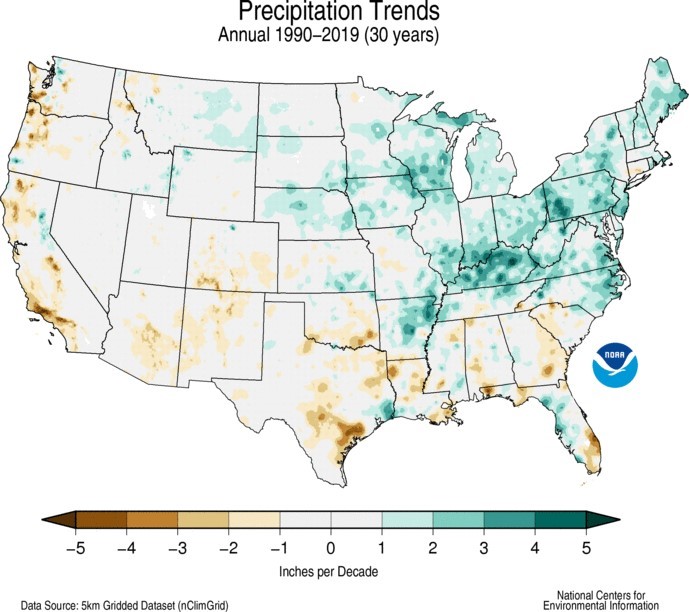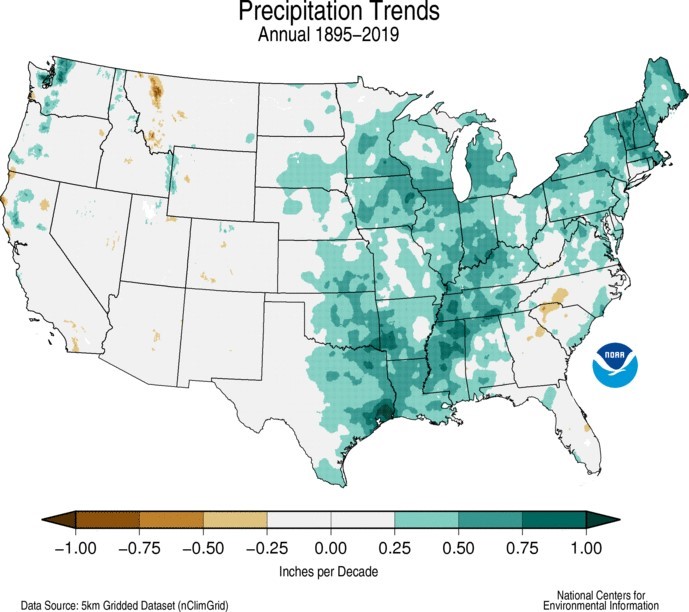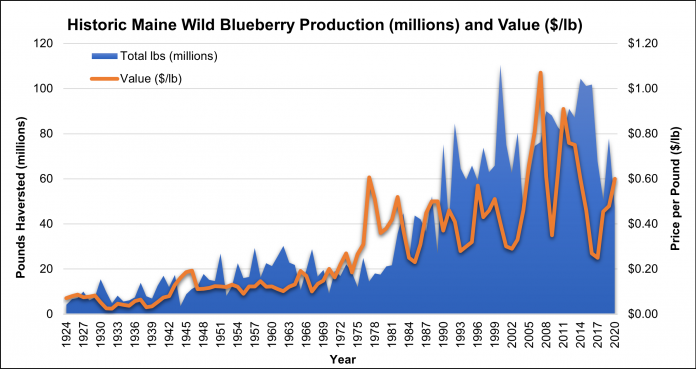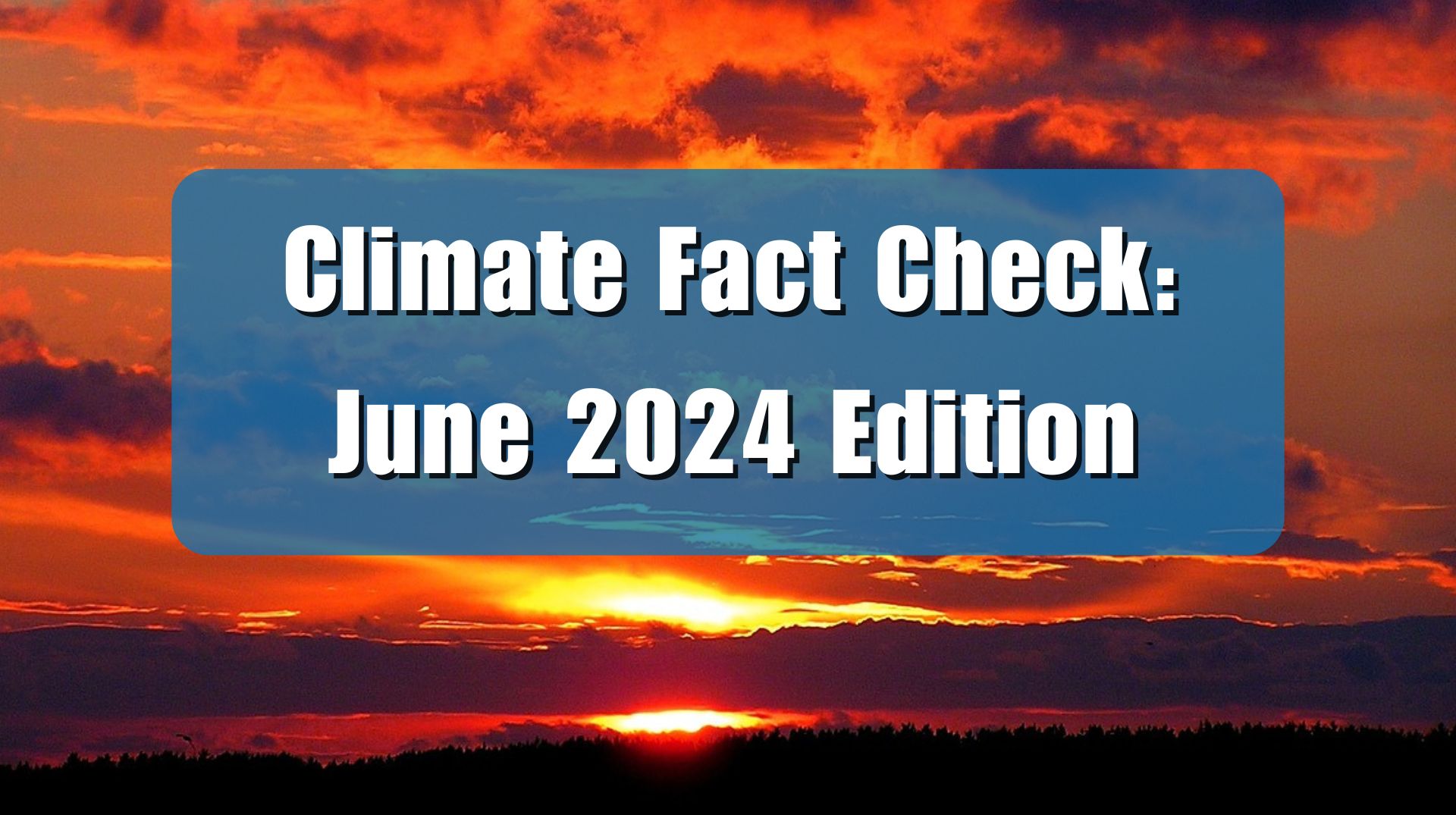Among its top search results today for “climate change,” Google News is promoting a story published in the Bangor News claiming global warming threatens blueberry harvests in Maine. However, data from the U.S. Department of Agriculture show that during the recent period of modest warming blueberry production in Maine and across in the United States have set records multiple times over the past few decades.
According to a story in the Bangor News, titled “A high-tech camera can save Maine’s blueberries from climate change:”
Maine’s iconic berry crop is facing a climate crisis that threatens its future. Scientists earlier this year reported that the Down East region — home to the state’s blueberry barrens — is warming faster than the rest of the state.
Coupled with ongoing drought conditions, that means Maine’s crops — the only commercially harvested wild blueberries in the country — will be smaller and less likely to survive.
Drought is a temporary weather condition and nowhere in Maine is there evidence droughts have become more common or longer lasting than they have historically been. In fact, whatever drought the author was worried about in the Down East region of Maine has passed. In December 2020, the U.S. Drought Monitor reported a more than 2/3 of Maine was experiencing abnormally dry conditions or worse, with 21.34 percent of the state experiencing moderate drought and 5.4 percent of Maine suffering from severe drought. The Down East region of Maine made up the bulk of the area suffering severe drought.
At present, by contrast, just 27.58 percent of the state is abnormally dry, including 11.82 percent of the state experiencing moderate drought conditions, and 5.32 percent experiencing severe drought. The Down East region is not currently experiencing any drought or even abnormally dry conditions. Across the state, and especially in Down East Maine, drought conditions have dramatically improved across the past three months.
The National Oceanic and Atmospheric Administration (NOAA) keeps detailed records of precipitation in Maine and throughout the nation. As shown in the two NOAA graphics below, Figures 1 and 2, Maine’s precipitation is increasing over time as the Earth modestly warms, not decreasing.


The increase in moisture has not depressed blueberry harvests in Maine, rather, unsurprisingly, it has seemingly benefitted blueberry production.
In the United States, blueberry harvests have set records 24 times since 1980, with the most recent record harvest coming in 2019. Between 1980 and 2019 blueberry production in the United States increased by approximately 566 percent.
Maine has been at the forefront of this growth. Maine is the largest producer of wild blueberries in the world. The state produces 10 percent of all blueberries in North America, including wild and cultivated production. Since 1980, Maine’s wild blueberry harvest has set records seven times. Harvests have not dipped below 1980’s production level since then.
When Maine wild blueberry production does decline in a given year, data show the harvest of wild blueberries in Maine closely tracks the price per pound. With few exceptions, less acres are harvested and fewer wild blueberries are picked in the year after a price decline, and more acres harvested and more blueberries are picked in the year following a price increase As seen in figure 3, during the last 30 years of modest global warming, Maine blueberry production was significantly up.

The evidence indicates Maine’s blueberry producers rationally respond to price signals. They exert less effort to harvest wild blueberries when prices are low, and put-in more effort to harvest the crop when prices are higher.
Rainfall across Maine has increased during the past century. Most of Maine is experiencing no drought conditions whatsoever at present, contrary to the Bangor News’ reporting, and data from the U.S. Drought Monitor shows more than 80 percent of the state is drought free.
In addition, data from the U.S. Agriculture Department show, Maine’s blueberry production, wild and cultivated, has increased dramatically over the period of modest warming. It’s wise for blueberry cultivators and wild harvesters to plan for whatever type of climate the future may hold, but the evidence thus far indicates modest warming has benefited blueberry harvests.

















